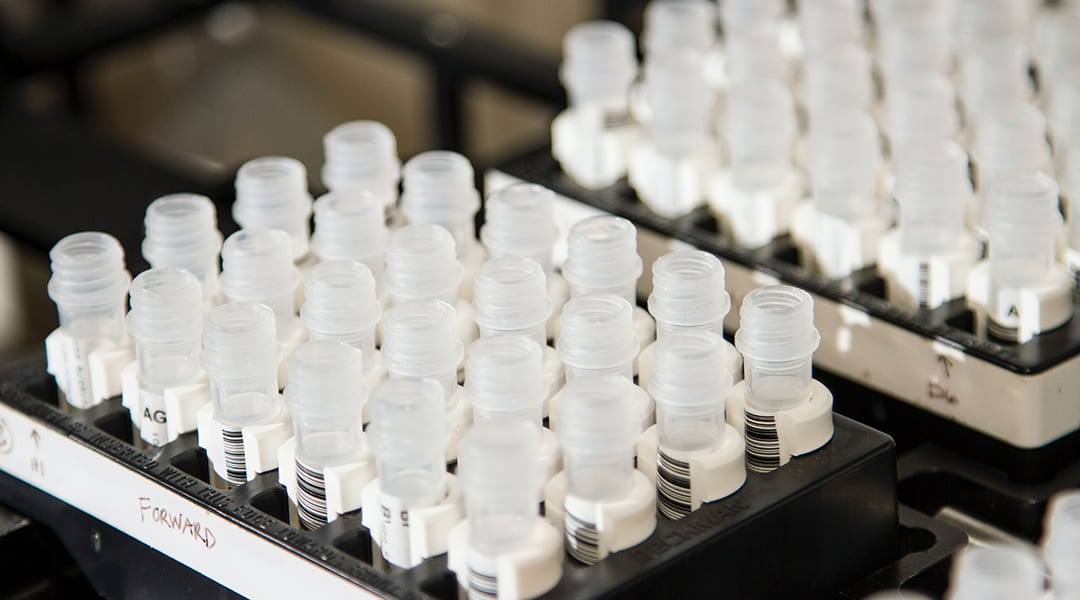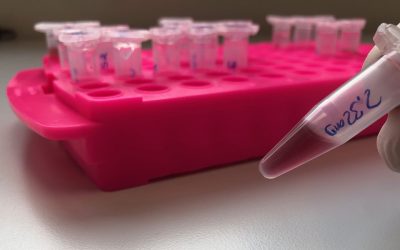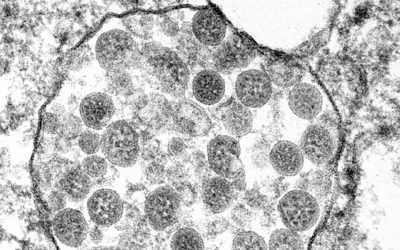Image credit: Unsplash
The first peer-reviewed results regarding the safety and efficacy of a COVID-19 vaccine have just been published by researchers at the University of Oxford in collaboration with the pharmaceutical firm AstraZeneca in Cambridge. Their findings appeared in The Lancet.
Among the contenders vying to produce the first effective vaccine to combat the COVID-19 pandemic, the Oxford-AstraZeneca vaccine has been of particular interest given that it will cost less — Oxford and AstraZeneca have agreed to provide the vaccine to buyers for US$2–$3 per dose — and is easier to store and distribute compared to the mRNA-based vaccines being produced by Pfizer and Moderna.
The Oxford COVID-19 vaccine uses a chimpanzee adenovirus viral vector that cannot cause disease in humans and expresses the SARS-CoV-2 spike protein. This means the vaccine delivers the spike protein genetic code into cells, which then produce the protein and prepare the immune system to respond to a future infection.
Vaccine efficacy
The current study included data from 23,745 adults in the UK, Brazil, and South Africa and in which half of the participants were given the COVID-19 vaccine and the other half given a control.
The results indicate that the vaccine is 70% effective against symptomatic disease, but a 62% efficacy was determined when participants were given two full doses compared to 90% efficacy when participants were first given a half then a full dose. “Use of a low dose for priming could provide substantially more vaccine for distribution at a time of constrained supply, and these data imply that this would not compromise protection,” wrote the authors.
A concern among reviewers was the fact that the low-dose group did not include participants over the age of 55, which may have skewed the efficacy calculation. At the request of reviewers, the authors were asked to complete exploratory subgroup analyses to determine why a half-initial dose could result in such a drastic improvement in efficacy, as well as to help understand whether this was in fact related to dose or other factors such as age and time between vaccine doses.
While the team indicated in the paper that more research and a secondary trial may be needed to fully understand the results, when the exploratory group was broken down by age, the vaccine still showed higher efficacy in the low-dose group for adults under the age of 55. How effective the vaccine is for the over 55 group is still not confirmed as only 12% of those evaluated for vaccine efficacy were over 55.
While the mechanism is still a mystery, the authors note that similar results have been seen for other vaccines where a reduced number or type of priming dose in infancy can lead to higher responses to a booster vaccine.
Protection against asymptomatic transmission
The trial also measured protection against asymptomatic infection by asking 6,638 UK participants to complete weekly COVID tests. Preventing asymptomatic transmission would be crucial to helping contain the pandemic, for which a majority of cases show no symptoms and are difficult to trace.
The trial’s results indicate a vaccine efficacy against asymptomatic transmission of 59% in the low-dose group. In the standard dose group, vaccine efficacy against asymptomatic transmission was found to be just 4%, though why this is the case is still unclear.
While these findings indicate some uncertainty, this is the first clinical trial to report on vaccine efficacy with regards to asymptomatic transmission, as Pfizer and Moderna’s results indicate analysis only in preventing severe or symptomatic cases of COVID-19, with no data on the vaccines’ ability to halt the spread of infection.
“While a vaccine that could prevent COVID-19 would have a substantial public health benefit, prevention of asymptomatic infection could reduce viral transmission and protect those with underlying health conditions who do not respond to vaccination, those who cannot be vaccinated for health reasons, and those who will not or cannot access a vaccine, providing wider benefit for society,” wrote the authors in the paper.
“However, the wide CIs around our estimates show that further data are needed to confirm these preliminary findings, which will be done in future analyses of the data accruing in these ongoing trials.”
“The results presented in this report provide the key findings from our first interim analysis. In future analyses, with more data included as it becomes available, we will investigate differences in key subgroups such as older adults, various ethnicities, doses, timing of booster vaccines, and we will determine which immune responses equate to protection from infection or disease,” said study author Dr. Merryn Voysey in a statement.
The results were published on the same day as Pfizer’s rollout of its vaccine in the UK.
Until widespread immunity halts the spread of SARS-CoV-2, physical distancing measures and novel therapies are needed to control COVID-19. In the meantime, an effective vaccine has the potential to have a major impact on the pandemic if used in populations at risk of severe disease.
Reference: Merryn Voysey, et al., Safety and efficacy of the ChAdOx1 nCoV-19 vaccine (AZD1222) against SARS-CoV-2: an interim analysis of four randomised controlled trials in Brazil, South Africa, and the UK, The Lancett (2020). DOI: 10.1016/S0140-6736(20)32661-1

















